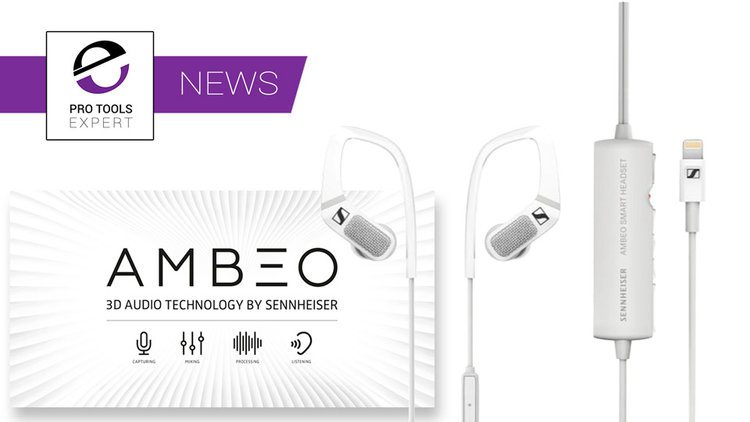
How Sennheiser Just Changed Audio Production and Experiences Forever
PREVIOUSLY PUBLISHED TO TALENT ZOO’S DIGITAL PIVOT
Before “Beats by Dre,” there was Sennheiser, a global leader in quality audio products. They have been known primarily for their studio-quality headphone product manufacturing. Shaping the future of audio, they have presented their groundbreaking AMBEO 3D Audio Technology at CES 2016, The Consumer Electronics Show in Las Vegas, Nevada.
An evolved state of binaural audio technologies, Sennheiser captivates audiences in new possibilities when it comes to audio capture and reproduction. With so many branded headphone options on the market, Sennheiser has put in major work to remain relevant as the global leader in headphone technologies around the world. And then it happened!
“3D audio is the new frontier of excellence, set to transform the listening experience for users across a broad range of applications, from virtual reality gaming to audio recording and broadcasting,” announced co-CEOs Daniel Sennheiser and Dr. Andreas Sennheiser.
“We have been active in this area for some time with 9.1 mixing and recording and the audio design for high-profile exhibitions. We are now increasing our efforts considerably to introduce this amazing sound quality into new products and applications, enabling users to experience and shape the future of audio.”
With 3D becoming the new “analog” in capturing the warmth and clarity of the live recording session, 3D immersive audio technologies are becoming extremely popular amongst recording studio and post-audio engineers around the country. The format of choice for many in the recording and mixing arena, 3D audio has been paving the way for clarity in the live mix and creating depth to studio post-production.
Once considered innovative, the stereo mix and surround-sound formats have simply become standards of the past with the onset of 3D recording capabilities. This is going to be a game-changer amongst the tight niche of audio engineers, who have mastered the art of the stereo mix. This also brings a new challenge to the forefront of music production and engineering. It will pave the way for a more realistic experience in audio post-production in film and television.
According to composer, producer, and musician Simon Franglen, “Not only are [listeners] inside the music, but they get the opportunity to really hear the detail and the arrangement that the musicians, arrangers and producers put into the recordings. Even as a professional, I have listened to tracks that I have thought I knew intimately to discover so much more than the stereo or mono mix was able to give me. Once you hear this, music changes forever.”
Individualized voices and instrumentation will see change in how they are compressed and equalized within perfected sound recordings. Spatial panning will become more complex. In electronic music, there will be more possibilities for experimentation with sound manipulation. Paired with the latest hologram technologies, the possibilities for encounters, both realistic and science fiction, are actually quite endless. We may soon realize that we are now living in a virtual world — without the barrier of goggles for entry.
As Sennheiser greets audiences at the CES2016, many onlookers are becoming the first to hold, touch, and listen to AMBEO 3D experiences. In a booth allocated with 9.1 listening capabilities, Sennheiser presents original recordings of “legacy music” to demonstrate the differences in sound quality. Sennheiser even invites guests to upload their own studio mixes to have them “upmixed” into the AMBEO “upmix algorithm” for a whole new insight into their own music recordings.
Not only will these technologies change the way audio is approached by prosumer and consumer audiences, but industries will change as well. Gaming will now enter a new plane of virtual-reality experiences. Soundscapes will be able to immerse players directly into games. Studios will be more demanding of visual artists, who will now have to keep up with the use of precise lighting and shadowing in synchronizing to sound placement for in-game encounters.
A science and art of its own, quality mic-ing procedures will now change to capture the band in a whole new way. With positioning, one misplacement could jeopardize the full mix. Veteran engineers will also be confronted with the need to adopt new microphone technologies to enhance their end product, meaning that a majority of their mixes will now require use of omnidirectional patterns, capturing the full spectrum of sound around the mic as opposed to dynamic, cardioid, and bi-directional patterns.
In fact, sound processors will also be transforming their algorithms to meet new demands in modeling environments and reproducing accuracy in real-time echo and reverberation efforts. The potential impact, however, is amazing, as it presents opportunity for virtual and outboard sound modules to strategically partner with some of our most beloved venues around the world, allowing the experience of being there live and in person through the 3D audio mix!
Sennheiser found additional success at this year’s CES event, named as an honoree for innovation in both the “Headphones” category and also in the “High Performance Home Audio-Video” category for their Orpheus headphones. Combining innovative sound technologies with precision and high quality craftsmanship, these headphones have been starting at $73,000 due to their ability to “push boundaries” of high-end audio without making compromises to sound quality.


